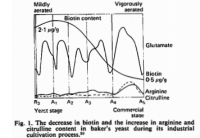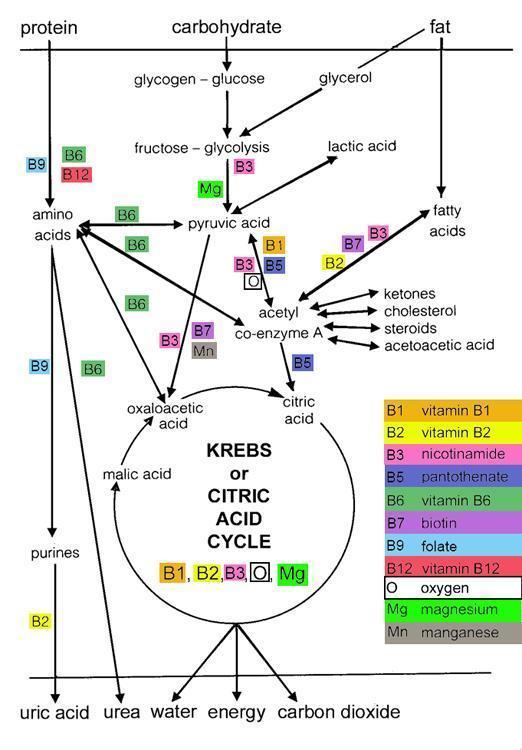Travis
Member
- Joined
- Jul 14, 2016
- Messages
- 3,189
Cocchi, Massimo, et al. "Linoleic acid: Is this the key that unlocks the quantum brain? Insights linking broken symmetries in molecular biology, mood disorders and personalistic emergentism." BMC neuroscience 18.1 (2017): 38.
A study was published early this year entitled, "Linoleic acid: Is this the key that unlocks the quantum brain? Insights linking broken symmetries in molecular biology, mood disorders and personalistic emergentism [sic]." This is not a joke. This was published in BioMed Central Neuroscience in April, and he cites the Peat-debunked Burr and Burr study:
So why linoleic acid? He never says. The brain has many different types of lipids. I don't think the physical properties of linoleic acid are particularly unusual considering the brain has fatty acids which have less, and have more, double-bonds. These are what create fluidity; double-bonds create kinks in the acyl chains.
There's actually a very good explanation for this: Both tryptophan — the serotonin precursor —and fatty acids compete for the same binding sites on serum albumin. There are five high-affinity tryptophan binding sites on serum albumin. Linoleic acid is the fatty acid which binds albumin, on average, most strongly.†

...and displaces tryptophan from serum albumin raising brain serotonin synthesis (Fernstrom).
†Spector, Arthur A. "Fatty acid binding to plasma albumin." Journal of lipid research 16.3 (1975): 165-179.
‡Curzon, G., June Friedel, and P. J. Knott. "The effect of fatty acids on the binding of tryptophan to plasma protein." Nature 242 (1973): 198-200.
§Godley, Paul A., et al. "Biomarkers of essential fatty acid consumption and risk of prostatic carcinoma." Cancer Epidemiology and Prevention Biomarkers 5.11 (1996): 889-895.
A study was published early this year entitled, "Linoleic acid: Is this the key that unlocks the quantum brain? Insights linking broken symmetries in molecular biology, mood disorders and personalistic emergentism [sic]." This is not a joke. This was published in BioMed Central Neuroscience in April, and he cites the Peat-debunked Burr and Burr study:
Cocchi: Since 1929 when Burr and Burr demonstrated the characteristics of essentiality of linoleic acid for animal organisms...
Ray Peat: In 1929 George and Mildred Burr published a paper claiming that unsaturated fats, and specifically linoleic acid, were essential to prevent a particular disease involving dandruff, dermatitis, slowed growth, sterility, and fatal kidney degeneration.
In 1929, most of the B vitamins and essential trace minerals were unknown to nutritionists. The symptoms the Burrs saw are easily produced by deficiencies of the vitamins and minerals that they didn't know about.
What really happens to animals when the "essential fatty acids" are lacking, in an otherwise adequate diet?
Their metabolic rate is very high.
Their nutritional needs are increased.
They are very resistant to many of the common causes of sickness and death.
They are resistant to the biochemical and cellular changes seen in aging, dementia, autoimmunity, and the main types of inflammation.
The amount of polyunsaturated fatty acids often said to be essential (Holman, 1981) is approximately the amount required to significantly increase the incidence of cancer, and very careful food selection is needed for a diet that provides a lower amount.*
It looks like he's trying to model membrane fluidity as a function of temperature and electron spin orientation, and using a magnetic analogy to explain the parallel double-bond alignment. But unsaturated fatty acid bonds are only slightly polar, so he had better so this is probably better explained by anomeric effects.Cocchi: A classic example involves a magnetic system composed of tiny magnets represented by spins arranged geometrically in a regular array. In principle they can be oriented in arbitrary directions but they also interact with each other via nearest-neighbor coupling which is called a spin–spin interaction. For this system, there is a competition between entropy that favors disorder in the spin orientations and spin alignment along one direction due to their spin–spin coupling energy, which is minimized for parallel alignment. At high temperatures, entropy “wins” and the system is disordered. At low temperatures, the opposite happens and the spins orient themselves along the same axis. The boundary between two ranges of temperature is called the critical point...
But it turns-out to be a put-on. The analogy was only intended to explain how a critical concentration of linoleic acid could act like an on/off switch, by using temperature and magnets (of all things.)Cocchi: By analogy with the above example, we propose that linoleic acid’s concentration in the membrane of neurons or glia acts as a control parameter (corresponding to temperature for magnetic systems), effectively behaving like a switch in a system close to criticality, i.e. resulting in a phase transition between a normal brain and a pathological brain when the linoleic acid concentration falls below its set value.
So why linoleic acid? He never says. The brain has many different types of lipids. I don't think the physical properties of linoleic acid are particularly unusual considering the brain has fatty acids which have less, and have more, double-bonds. These are what create fluidity; double-bonds create kinks in the acyl chains.
Oh! So this is why he automatically just assumes that linoleic acid would "unlock the quantum brain?" and not, say . . . palmitic acid which would be better-expected to lower membrane fluidity.Cocchi: Recent observations, conducted on the characterization of the platelet fatty acids in mood disorders and ischemic heart disease have consistently shown that a very low concentration of linoleic acid is correlated with these diseases. This observation was found to be particularly interesting in brains of depressed subjects who had completed suicide.
There's actually a very good explanation for this: Both tryptophan — the serotonin precursor —and fatty acids compete for the same binding sites on serum albumin. There are five high-affinity tryptophan binding sites on serum albumin. Linoleic acid is the fatty acid which binds albumin, on average, most strongly.†
...and displaces tryptophan from serum albumin raising brain serotonin synthesis (Fernstrom).
It can'tCocchi: For the benefit of the reader, we explain the key features of the model in order to better understand how it can be made useful in applications to brain dynamics. The total energy of this type of magnetic system is calculated using the so-called Hamiltonian function, namely:
where J is the interaction constant, sᵢ is the spin, whose value can be either −1/2 or 1/2, for the i-th magnetic particle in the spin lattice [...] Cocchi: How can this be translated into the dynamics of membrane’s phospholipids?
He's inspired by Penrose's microtubule quantum paper and proposes another, but goes for the Rube Goldberg approach.
So the concentration of linoleic acid is imagined to strongly control the permeability of ion channels, controlling the quantity and quality of ions which stabilize – during assembly – the microtubules necessary for consciousness: yet no other fatty acid can do this.Cocchi: This could affect the decoherence times of quantum excitations in the collective states of ions traversing the ion channels and in turn affect mental processes. Decoherence times define the duration of a quantum state before it manifests itself by a so-called wave function collapse meaning its actual value can be measured or observed. [...] Microtubule depolymerizing agents (e.g., colchicine) eliminate peripheral cytoskeleton and action potential together [31, 32] and modify G protein signaling in mammalian cerebral cortex [33]. Microtubule stabilizing agents restore cytoskeleton and action potential together [31, 32]. Divalent ions such as magnesium and zinc restore cytoskeleton and action potential, according to Tasaki et al. [34]. On the other hand, calcium ions destabilize microtubules and actin filaments directly or indirectly by interactions with the various associated proteins.
He didn't seem to properly think this through. He is using quantum woospeak, but he should probably confound the reader further by bringing a high-linoleic acid food into the analogy—like walnuts. You cannot unlock the quantum brain with these foods.Cocchi: This can be metaphorically illustrated by having simultaneous thoughts of ordering sushi and pasta before making a decision. Once we order sushi, this is akin to the wave function collapse and making an actual choice. Decoherence time is the time it takes to collapse a quantum state.
No it's not. Linoleic acid raises serotonin in the brain by displacing tryptophan from serum albumin. It also is the only precursor for arachidonic acid, which is the only precursor of eicosanoids. These act on nuclear PPAR receptors to upregulate a suite of genes that shift the cell towards an fat-synthesizing, fat-storing, and subsequent insulin-resistant state. High amounts found in tissue are associated with cancer.§Cocchi: Cell membrane and fatty acids, in particular linoleic acid is the “key that opens to the quantum brain” through the dynamics of the cytoskeleton.
No.Cocchi: In a nutshell...
*Unsaturated fatty acids: Nutritionally essential, or toxic?†Spector, Arthur A. "Fatty acid binding to plasma albumin." Journal of lipid research 16.3 (1975): 165-179.
‡Curzon, G., June Friedel, and P. J. Knott. "The effect of fatty acids on the binding of tryptophan to plasma protein." Nature 242 (1973): 198-200.
§Godley, Paul A., et al. "Biomarkers of essential fatty acid consumption and risk of prostatic carcinoma." Cancer Epidemiology and Prevention Biomarkers 5.11 (1996): 889-895.
Last edited:





